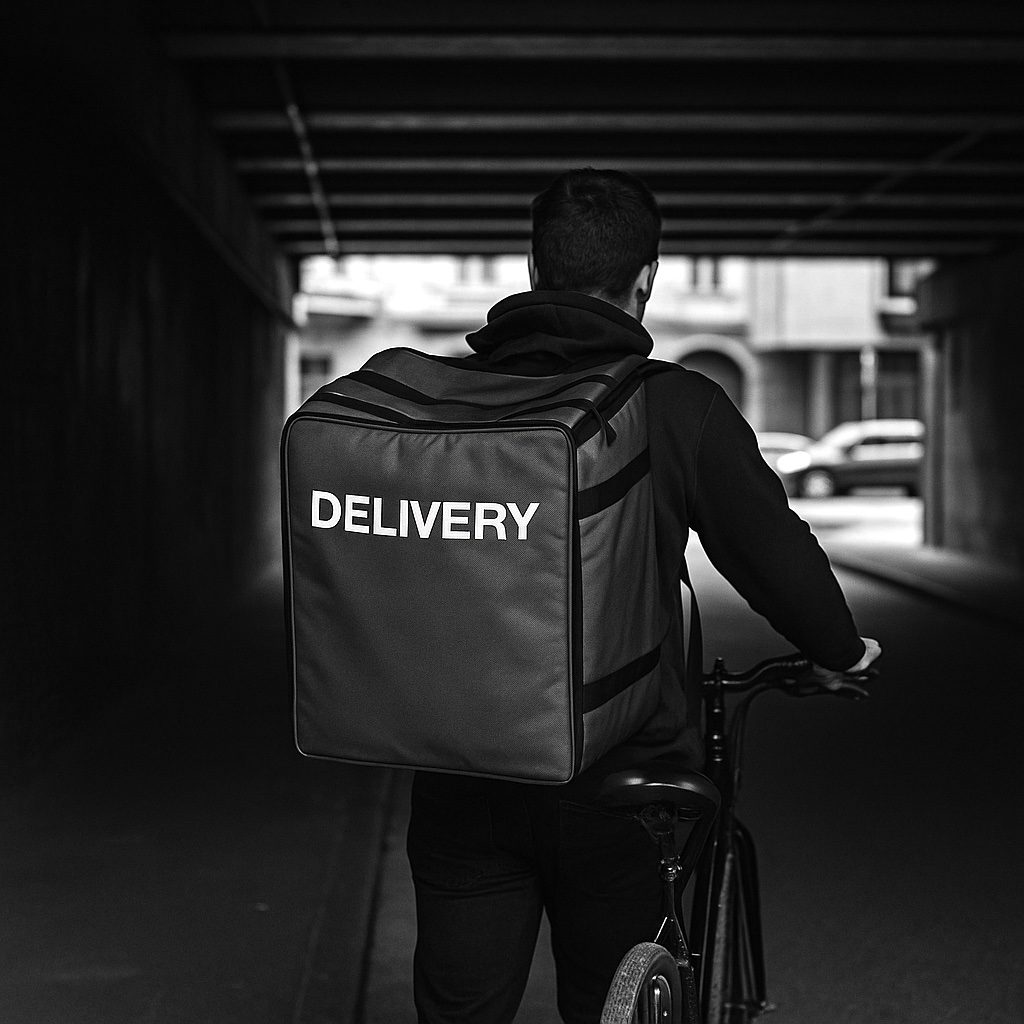
Precarity as a business model: the true cost of the gig economy
by Kai Ochsen
In the glowing narrative of modern capitalism, the entrepreneur who "disrupts" markets and builds multi-billion-dollar platforms is glorified. Their products promise efficiency, freedom, and access, a new economy built on demand and technology. But behind the sheen of innovation lies an uncomfortable truth: many of these companies owe their success not to brilliance, but to systematic exploitation.
At the heart of this ecosystem lies a business model that converts poverty into profit, and precarity into a scalable asset. Welcome to the gig economy, the modern digital sweatshop.
The myth of empowerment
One of the most pervasive lies sold by gig economy companies is the illusion of freedom. Uber, JustEat, Glovo, Deliveroo, Rappi, all boast the same slogan: “Be your own boss.”
On paper, it sounds liberating. No schedule. No boss. Flexible hours. But reality tells a darker story. Gig workers may technically be self-employed, but they are anything but independent:
They must accept all tasks or face algorithmic punishment.
Their pay is determined by opaque formulas.
They are rated by customers who rarely see them as people.
They can be deactivated at any time, without appeal or explanation.
This is not entrepreneurship. It is hyper-controlled labor, detached from the protections of formal employment yet deeply micromanaged by technology and metrics.
Externalizing risk, internalizing profit
In traditional employment, companies pay salaries, provide health insurance, equipment, and maintain workplace conditions. In the gig economy, those responsibilities are cleverly offloaded to the worker.
Drivers use their own vehicles, pay for their own insurance, fuel, maintenance, phone data, and safety gear. Their time is unpaid unless a job is in progress. They wait in the cold, in traffic, or in queues, all on their own dime. Any cost associated with the labor is outsourced to the person performing it. But the margin, the real money, stays with the platform.
This model, at scale, becomes immensely profitable. Millions of micro-transactions generate a consistent flow of commissions, while the company avoids taxes, social security contributions, and employee obligations. It is not that these platforms are inefficient, it’s that they’re efficient in the worst way: by treating people as expendable infrastructure.
The tip economy and the disappearance of wages
Another sinister evolution is the normalization of tips replacing wages. Food delivery apps and ride-sharing platforms now design their interfaces to make tipping feel not optional, but mandatory, because they know workers depend on it to survive.
But tipping is a social tool, not a salary. It creates income unpredictability. It shifts the burden of fair compensation from the company to the customer. The platform keeps its rates low and its user base happy, while the worker gets scraps and uncertainty. In this model, the user becomes complicit, and the worker becomes desperate.
Success built on desperation
Many gig economy workers don’t choose this lifestyle, it chooses them. Migrants, students, single parents, and people excluded from the formal labor market make up the backbone of this workforce. They enter not for flexibility, but because they have no better options. When the only way to survive is to deliver food, drive strangers, or run errands, your “freedom” becomes a polite euphemism for economic coercion.
Meanwhile, the CEOs of these platforms receive stock options, exit in billion-dollar IPOs, and attend conferences where they speak of “disrupting poverty.” But they aren’t solving poverty, they’re leveraging it.
Regulatory failure and legal loopholes
Governments have been slow, and often unwilling, to regulate this system. The legal fiction of “independent contractor” status persists in many countries. Even where rulings have challenged it, such as in California’s AB5 or Spain’s Rider Law, companies have resisted, stalled, or lobbied for carve-outs.
What’s worse, many governments see these platforms as job creators, and invest in them. They celebrate short-term gains while ignoring long-term harm.
Exploitation wrapped in convenience
For customers, the appeal is simple: tap a button, get a ride or food in minutes. But that convenience is not neutral. Every underpaid courier dodging traffic or Uber driver skipping meals to make ends meet is the hidden cost behind the on-demand culture.
And with no human behind the transaction, just a screen, it's easy to ignore the social decay that underpins it.
Is this the future of work?
If left unchecked, this model becomes the blueprint for all labor:
No benefits.
No safety nets.
No accountability.
Gig work will creep into teaching, healthcare, logistics, and even white-collar jobs, until everyone is a freelancer begging for five-star reviews and chasing algorithmic bonuses.
The so-called “future of work” looks more like the past of exploitation, repackaged in sleek UX and hidden behind a privacy policy.
There’s a better way
This is not an anti-tech rant. Technology can improve lives, democratize work, and offer real opportunity. But only when it’s grounded in ethics and dignity.
Platform cooperatives, fair labor marketplaces, and unionized digital services exist, but they are rarely given the attention or funding that VC-backed gig empires receive. That must change.
We need to reclaim innovation from exploitation, and define success not by exit valuations, but by how well a business treats those who sustain it.
The gig economy is not a revolution. It's a return to a pre-industrial labor model where workers are disposable and profits are feudal. It’s marketed as freedom, but operates as a trap.
So the next time someone praises an “innovative” startup that uses underpaid labor and calls it progress, remember this: there is nothing modern about making money off desperation.